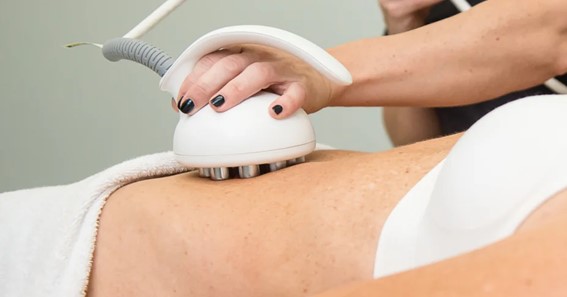Are you curious to know what is fibrosis after lipo? You have come to the right place as I am going to tell you everything about fibrosis after lipo in a very simple explanation. Without further discussion let’s begin to know what is fibrosis after lipo?
What Is Fibrosis After Lipo?
Liposuction is a popular cosmetic procedure designed to remove excess fat deposits and contour the body. While liposuction can provide excellent results for many individuals, it’s important to be aware of potential complications that may arise, including the development of fibrosis. In this blog post, we will explore the concept of fibrosis after liposuction, its causes, treatment options, and strategies for prevention.
Understanding Fibrosis
Fibrosis refers to the formation of excess scar tissue in response to tissue damage or inflammation. After liposuction, fibrosis can occur as a natural part of the healing process. It involves the deposition of collagen fibers, which can lead to firmness, lumpiness, or irregularities in the treated areas. While some degree of fibrosis is common after liposuction, excessive or prolonged fibrosis can result in noticeable cosmetic concerns.
Causes Of Fibrosis After Liposuction
- Trauma to Tissue: During liposuction, the fat cells are disrupted and removed through a suctioning process. This trauma to the tissues can trigger an inflammatory response, leading to the development of scar tissue.
- Improper Technique: The technique used during liposuction plays a crucial role in minimizing the risk of fibrosis. Aggressive or excessive liposuction, inadequate postoperative care, or improper surgical techniques can increase the chances of fibrosis.
- Individual Healing Response: Each person’s body responds differently to surgical procedures. Some individuals may have a predisposition to develop fibrosis due to their genetic makeup or inherent healing characteristics.
Treatment Options For Fibrosis
- Manual Lymphatic Drainage (MLD): MLD is a specialized massage technique performed by trained therapists to improve lymphatic circulation and reduce fluid retention. This gentle massage can help break down scar tissue and promote the body’s natural healing process.
- Non-Invasive Therapies: Various non-invasive treatments, such as radiofrequency, ultrasound, or laser therapy, can be used to target fibrotic tissue. These therapies promote collagen remodeling, improve tissue elasticity, and reduce the appearance of fibrosis.
- Surgical Revision: In cases where severe fibrosis persists despite conservative treatments, surgical revision may be considered. This involves removing or releasing the scar tissue to improve the overall contour and texture of the treated area.
Prevention Strategies
- Choose an Experienced Surgeon: Selecting a board-certified plastic surgeon with extensive experience in liposuction is crucial. A skilled surgeon will employ proper techniques, perform the procedure with precision, and minimize the risk of excessive tissue trauma.
- Follow Postoperative Instructions: Adhering to postoperative care instructions provided by your surgeon is essential for optimal healing. This includes wearing compression garments, taking prescribed medications, avoiding strenuous activities, and attending follow-up appointments.
- Engage in Gentle Massage: Gentle self-massage, as instructed by your surgeon, can help promote lymphatic drainage, minimize fluid retention, and prevent the development of excessive scar tissue.
- Maintain a Healthy Lifestyle: Leading a healthy lifestyle that includes regular exercise, a balanced diet, and maintaining a stable weight can contribute to better healing and minimize the risk of complications.
Conclusion
While liposuction can provide transformative results, it’s important to understand the potential complications that may arise, such as fibrosis. By understanding the causes, treatment options, and prevention strategies for fibrosis after liposuction, individuals can make informed decisions and work closely with their surgeon to achieve the desired outcomes. Consulting with a qualified plastic surgeon, following postoperative instructions diligently, and maintaining a healthy lifestyle can help minimize the risk of fibrosis and ensure a successful liposuction experience. Remember, open communication with your surgeon is key to addressing any concerns or complications that may arise during the healing process.
Learn more about similar topics like these on Clynerr
FAQ
How Do You Get Rid Of Fibrosis After Lipo?
Treatment of Fibrosis after Liposuction
Compression therapy: Compression garments support the treated area and prevent the formation of new fibrous tissue. Radiofrequency therapy: RF energy waves can be used to heat the underlying tissues and break down the fibrous tissue.
Can Lipo Fibrosis Be Fixed?
Introduction: Post-liposuction fibrosis is a relatively common complication which can be repaired.
How Do You Know If You Have Fibrosis After Lipo?
If you notice lumps after inflammation has gone ( 1 month after the procedure) that could be a sign of fibrosis. Pigmentation. After a liposuction, red spots on the skin are normal, but if these don’t disappear or increase in number, this is also a sign of fibrosis.
What Causes Fibrosis After Plastic Surgery?
After a patient has any type of surgery, as their skin begins to heal, scars and adhesions can begin to form. Fibrosis happens during the healing process due to the body overproducing connective tissue cells called fibroblasts. The minute the surgeon creates an incision the body begins to heal itself.
I Have Covered All The Following Queries And Topics In The Above Article
Is Fibrosis After Lipo Permanent
How To Get Rid Of Fibrosis After Lipo At Home
How To Fix Fibrosis After Lipo
Is Fibrosis After Lipo Dangerous
Fibrosis Years After Lipo
How To Get Rid Of Hardness After Lipo
How To Get Rid Of Fibrosis In The Stomach
What Is Fibrosis After Lipo
Is fibrosis normal after surgery
How common is fibrosis after Lipo?
